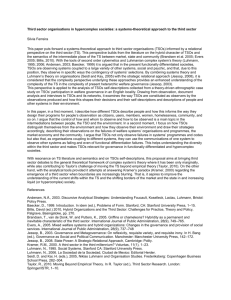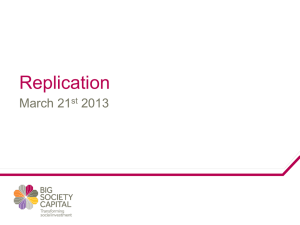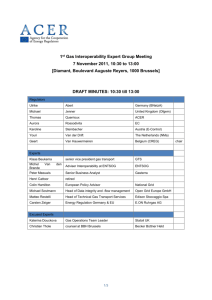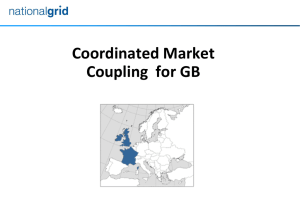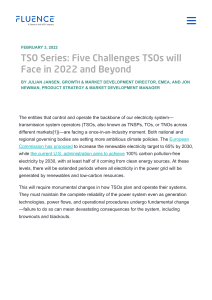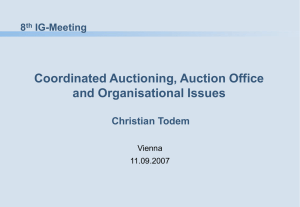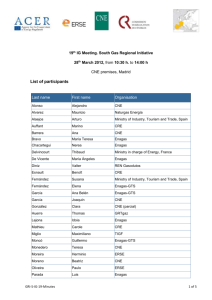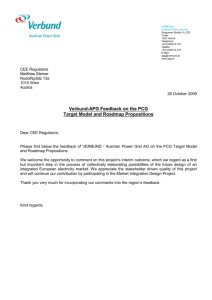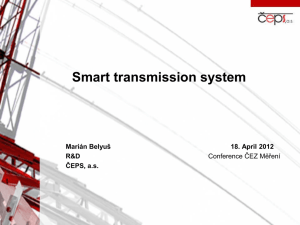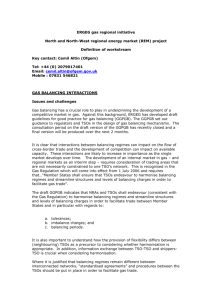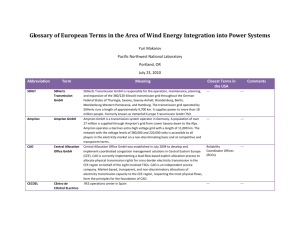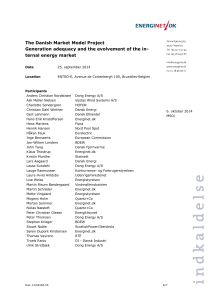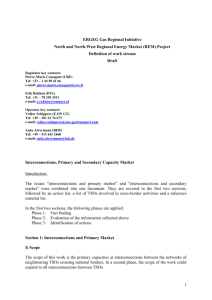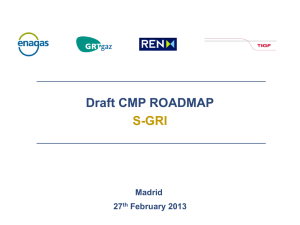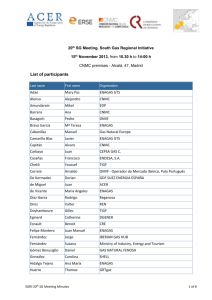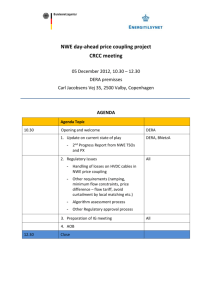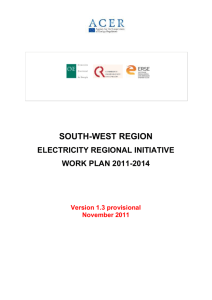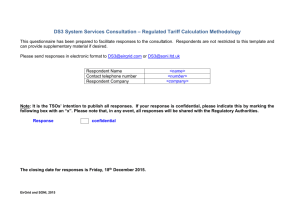Technical System Options
advertisement
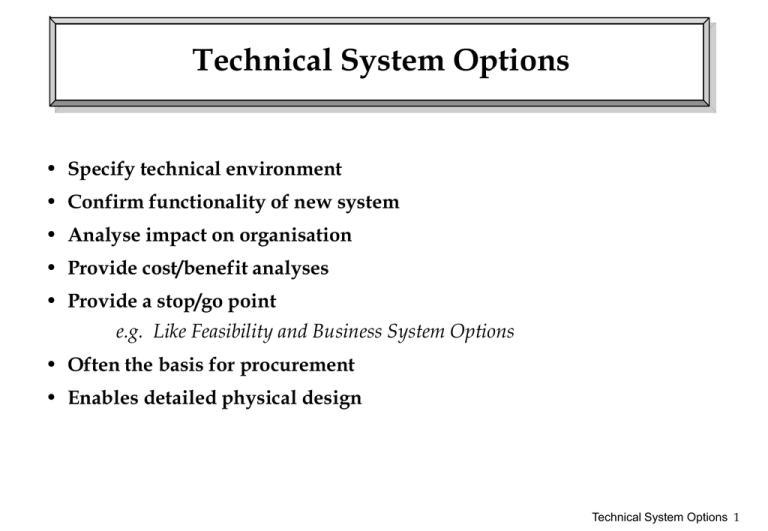
Technical System Options • Specify technical environment • Confirm functionality of new system • Analyse impact on organisation • Provide cost/benefit analyses • Provide a stop/go point e.g. Like Feasibility and Business System Options • Often the basis for procurement • Enables detailed physical design Technical System Options 1 Technical System Option Components • End product of Stage contains following documents: – Technical Environment Description (TED) – System Description – Impact Analysis – Outline Development Plan – Cost/Benefit Analysis Technical System Options 2 Technical Environment Description Hardware • Hardware TED is generic rather than specific • System Diagram showing layout – number of terminals or PCs – printers – communication lines – processors – other devices • Hardware also subject to System TED Technical System Options 3 Technical Environment Description System • Textual descriptions which may cover – standards – communications – environment – installation – upgrade arrangements – reliability – serviceability – availability – maintainability – software Technical System Options 4 Technical Environment Description Software • May cover following aspects: – data management software – system recovery and dumping facilities – operating system – application packages – construction software e.g. Programming languages, testing tools – development environment – access rights and security – system sizing – space requirements – processing performance – first-cut physical design Technical System Options 5 System Description • Shows how option satisfies Requirements Specification • Supports major decisions taken in Business System Options • Includes alternative systems with trade-offs • Shows degree to which system requirements met NB. It is also important to show which functions/facilities will not be provided • Includes – Required System Logical Data Model – Function Definitions – Requirements Catalogue (showing solutions based on the option) Technical System Options 6 Impact Analysis • Explains effects on user environment • Should cover – organisation and staffing – changes in user operating procedures – implementation considerations such as conversion – savings – comparative advantages and disadvantages of alternative TSOs • Includes issues documented in following products: – Training Requirements Description – User Manuals Requirements Description – Testing Outline – Take-on Requirements Description Technical System Options 7 Outline Development Plan • Enables development costs to be estimated • Shows next module in detail • Shows outline of subsequent plans • Should contain time, resource and cost estimates for – physical design – program design and programming – procurement – system testing – implementation Technical System Options 8 Cost/Benefit Analysis • Most objective way to compare merits of options • Cost/Benefit Analysis should cover: – development costs – operating costs – tangible benefits and displaced costs i.e. Current system costs eliminated by new system – cost containment • Intangible benefits – improved product quality – improved service to customers – greater job satisfaction for employees – improved management information Technical System Options 9 Considerations for TSOs • Staff involved • External and internal constraints • Development of outline Technical System Options • Refining Technical System Options • Making the selection • Documenting the selection Technical System Options 10 Staff Involved in Technical System Options • Project board – often assesses TSOs and makes selection – may terminate project if no suitable option found • Project Manager or Module Manager – finalises TSOs – finalises and presents TSOs • Analysts – research and document requirements – formulate TSOs for presentation Technical System Options 11 The Decision Makers • Usually project board • Special review group including users and IT specialists • Standard QA review group • Consensus approach – selection made by project board based on user views Technical System Options 12 External Constraints • Imposed from outside the project • Typical constraints include – delivery dates – total costs – hardware and/or software preferences Technical System Options 13 Internal Constraints • Set within the project by the user • Typical constraints include – mandatory facilities e.g. On-line access, word processing – minimum service levels e.g. Mean time between failures, maximum time to restore system, availability, reliability – data storage space requirements – critical timing criteria – information objectives – operating environment conditions – security requirements – interfaces to other Information Systems Technical System Options 14 Making the Selection • Present TSOs NB. Presentations frequently made to users as well as Project Board • Prepare carefully for presentation – provide amplification and answer queries – record significant comments • Often selection chosen is hybrid of options – document the selection – record reasons for selection • Update selected Technical System Option • Update associated Technical Environment Description Technical System Options 15 Further Activities • Develop Application Style Guide from Installation Style Guide • Service Level Requirements become the basis for Service Level Agreements • Physical design will be based on the Technical Environment Description Technical System Options 16
